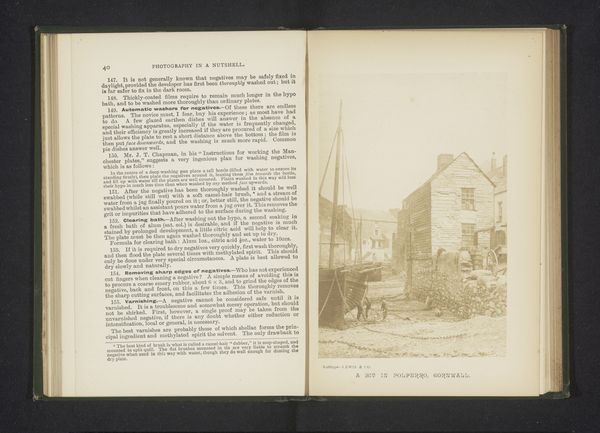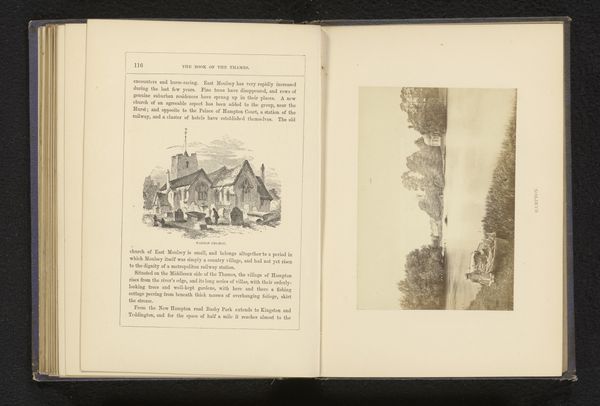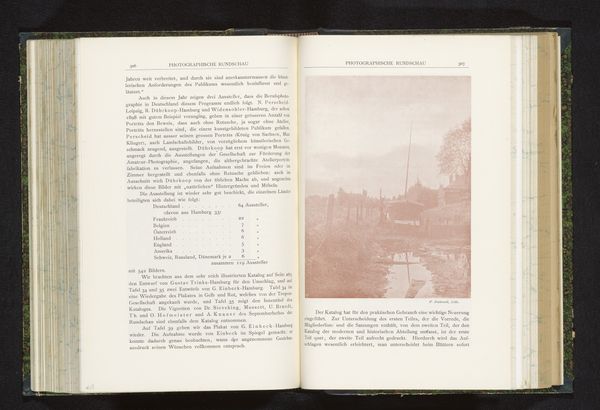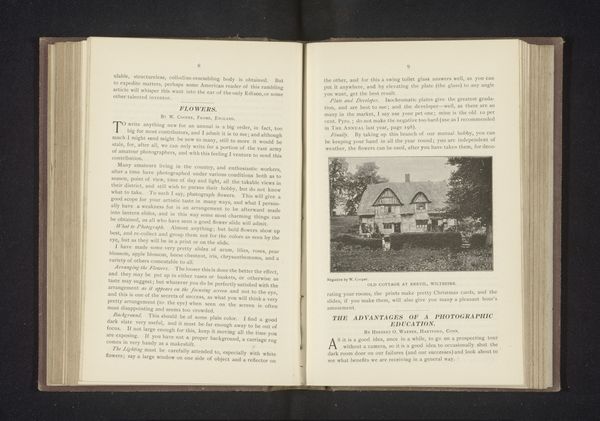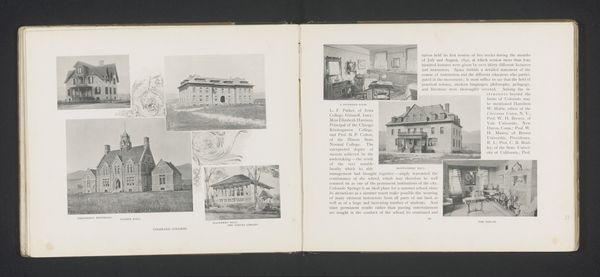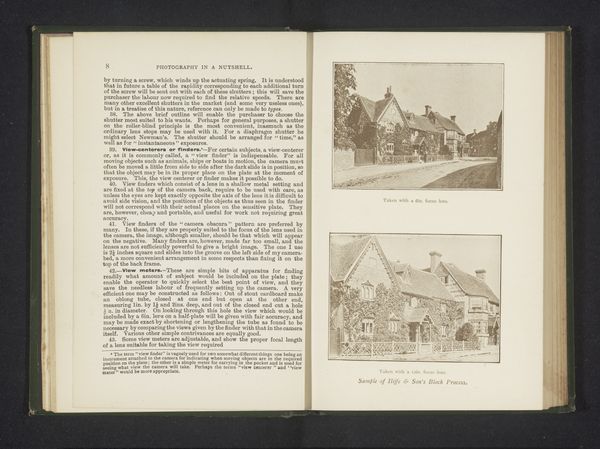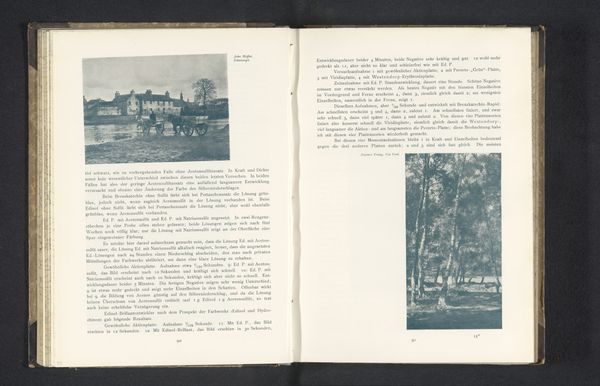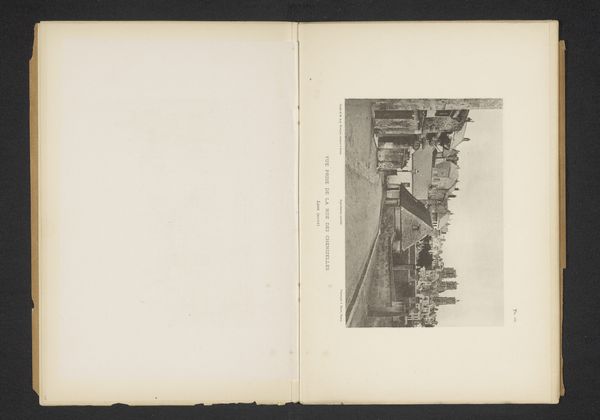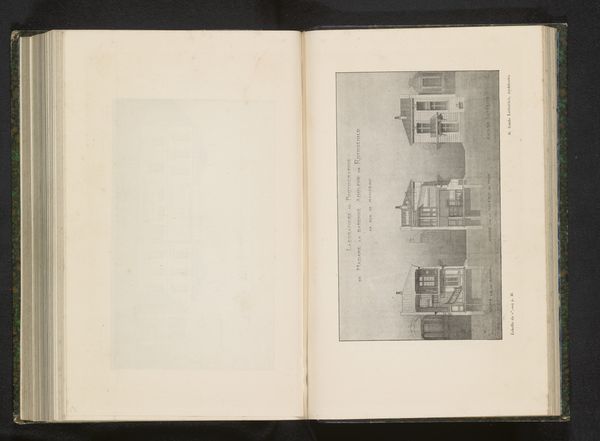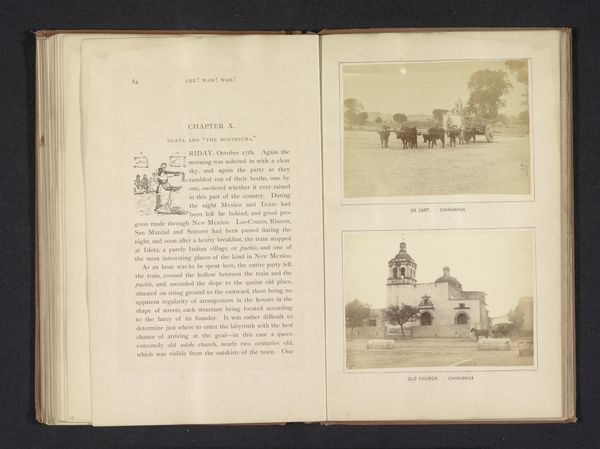
print, photography
#
aged paper
#
book binding
#
homemade paper
#
paper non-digital material
#
paperlike
# print
#
sketch book
#
hardpaper
#
landscape
#
photography
#
personal sketchbook
#
journal
#
cityscape
#
letter paper
Dimensions: height 215 mm, width 138 mm
Copyright: Rijks Museum: Open Domain
Curator: We’re looking at a plate entitled "Drie voorbeelden van perspectivische studies", or “Three Examples of Perspective Studies,” created before 1895. The photographer is Heinrich Streintz. It’s a print presented within a bound volume. Editor: Well, it immediately strikes me as a little melancholy. Maybe it’s the monochrome palette, but I imagine fog hanging in the streets. It's as if the buildings are fading away into a dream. Curator: Note the rigid, almost geometric presentation. Three distinct photographic studies, each demonstrating perspectival techniques, are neatly aligned on the page. Observe how each example uses linear perspective to convey depth, directing the eye towards a vanishing point within the cityscape. Editor: I like how the choice of a bound book highlights that photography was studied and methodized—codified, even—like academic principles within the pages of a journal or study. Streintz invites us to examine photography with a critical eye. Did it fulfill his theoretical ideas? Or did photography remain delightfully unpredictable? Curator: Precisely. We should acknowledge the formal qualities inherent in the presentation itself: the contrast between the aged paper of the book and the crisp detail of the printed photographs. The visible binding speaks to the material objecthood of the work, reinforcing the artist’s methodized approach. Editor: Right! Photography trying to be rational—taming the ghost in the machine! I wonder if it succeeds… I think there’s something poignant about striving for order. And I also find myself thinking about how much our concept of photographic “reality” has changed in 130 years. Curator: The studies allow the viewer to appreciate the application of specific technical principles—foreshortening, recession, scale. These studies serve as pedagogical tools. Editor: These “studies” capture an enduring interest—or tension—in what we consider truthful depiction and accurate transcription. Curator: Yes. It underscores photography as a field of inquiry—and how far that field has advanced since these prints were created. Editor: Exactly. Viewing this reminds me to look more deeply and more analytically, even at the fleeting image of the everyday. Thanks for that, Dr. Streintz!
Comments
No comments
Be the first to comment and join the conversation on the ultimate creative platform.
